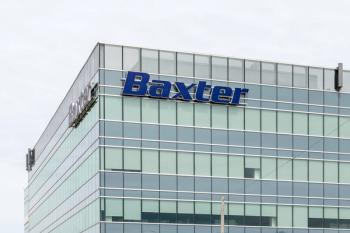
Blockchain technology has the potential to revolutionize healthcare
For healthcare, blockchain can be used for payment processing, but it can also improve interoperability, track claims processing, or develop and maintain provider directories.
Blockchain -- the same technology powering
Blockchain is best known for its security, distributed nature, and immutability. The technology is most often associated with
A Growing Trend
In 2020, Gartner listed blockchain as one of its top 10 strategic trends, following the institution of blockchain as part of the nationwide healthcare system in Estonia in 2016. Such a system is far from reaching full implementation in the U.S., but strides are being made to generate innovation and creativity for the industry’s future.
Blockchain also helps to bring new thoughts to long-lasting questions of how to improve outdated technology in healthcare. Many medical offices continue to rely on pagers and fax machines. In contrast, many internet-connected medical imaging devices remain based on
Blockchain could provide new solutions to augment the security and protection of personal health data, one of the most important aspects of building trust in the industry. Patient data is sometimes difficult to access because it is stored in one physical location or another, remote from the provider who needs it at a particular time. With the blockchain, encrypted patient data could be stored securely and effectively, with fewer opportunities for lost files or miscommunication. With a secure cryptographic database combined with the potential of a shared ledger, blockchain could provide significant advantages for medical record storage, especially for patients who see multiple providers; this could help to prevent misdiagnosis or unwanted drug interactions while preserving patient confidentiality and security.
Using blockchain in healthcare
Blockchain models include
- A shared, distributed ledger
- An immutable and traceable record
- Encryption
- Distributed consensus mechanism for recording changes
- Tokenization
While some healthcare blockchain implementations may use the full blockchain model, others may focus on particular aspects of the technology's potential utility.
Some companies are already working on implementing blockchain technologies in healthcare. One such project used the blockchain to create a community for medical professionals to communicate and make partnerships and agreements. Other companies are creating blockchain solutions for information storage -- both for patient files and practice information.
Major Players Getting Involved
The new initiative from Aetna, Anthem, and the Cleveland Clinic is drawing even more attention because it involves such significant leaders in the field, evidencing a higher level of commitment to
The consortium aims to eliminate inefficiencies and duplications in the healthcare system -- especially those involving multiple copies of files that may be outdated or otherwise incomplete. This may allow insurers, providers, and even patients to communicate quickly and securely about key issues without adding more paper to the process.
Avaneer is not alone; several of the largest insurers and lab companies have also launched the Synaptic Health Alliance to focus on using blockchain-based distributed ledger technology to improve insurers' provider directories. Meanwhile, IBM launched a blockchain network to help healthcare institutions and government agencies identify companies that could supply in-demand health equipment, aiming to address some of the supply chain problems associated with the COVID-19 pandemic.
Potential blockchain innovations in healthcare
When Gartner named blockchain one of its top 10 strategic technology trends, it was not only concerned with billing, claims, and directories -- it was also interested in how blockchain could be used in the provision of medical care. For example, blockchain technologies could provide mechanisms for tracing the origin and spread of food-borne or water-borne illnesses. It could help to find potential contaminants and warn those who may be exposed.
Gartner combined its analysis of potential blockchain uses with other major technologies like distributed cloud computing, artificial intelligence, traceability, and automated democratization. The latter two points, while not necessarily central to many of the enterprise blockchain projects focusing on immutable distributed ledgers, are key contributors to the appeal of cryptocurrencies powered by the blockchain. Doctors, patients, and other companies in the sector could monitor and trace their information through the system with the use of blockchain technology, promoting a greater level of confidence and trust as well as improved efficiency and accuracy.
Estonia: Blockchain healthcare in practice
There may be important lessons to learn from the
Estonian residents can use their electronic ID cards to sign in and view their health records. Blockchain is used to ensure that the data kept there remains immutable, guarded against potential attacks by hackers targeting the system. Several major pharmaceutical companies, including Roche, are working with the Estonian government to determine future applications for blockchain in healthcare -- and the success of blockchain in the healthcare sector in Estonia has also sparked interest in blockchain development for the country's digital court system, business registry, succession registry, and property registry.
There are many more developments to come and technological innovations that can spur further blockchain development in the healthcare industry. Beyond its utility for Bitcoin and other cryptocurrencies, blockchain could provide security and transparency that could help to revolutionize how the healthcare industry handles data while protecting patient confidentiality.
Mary Tolan (
Newsletter
Stay informed and empowered with Medical Economics enewsletter, delivering expert insights, financial strategies, practice management tips and technology trends — tailored for today’s physicians.



















